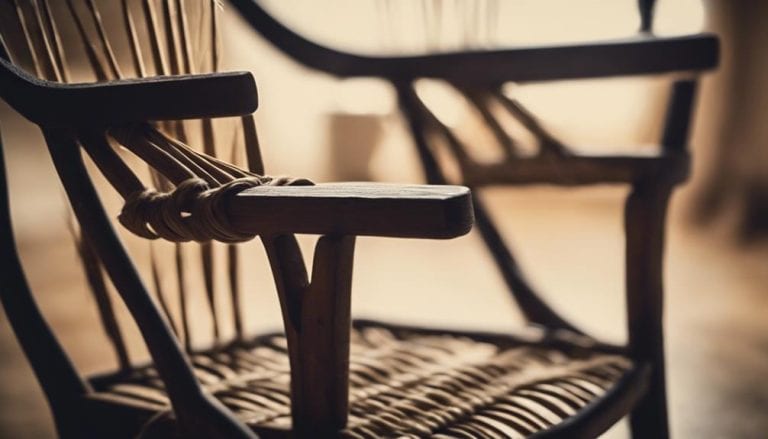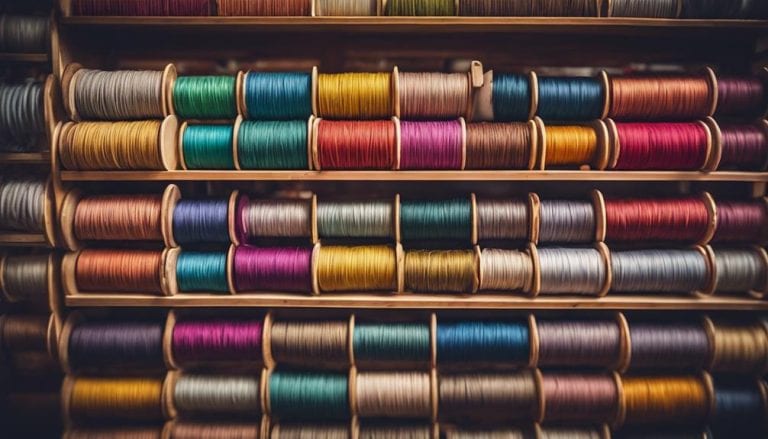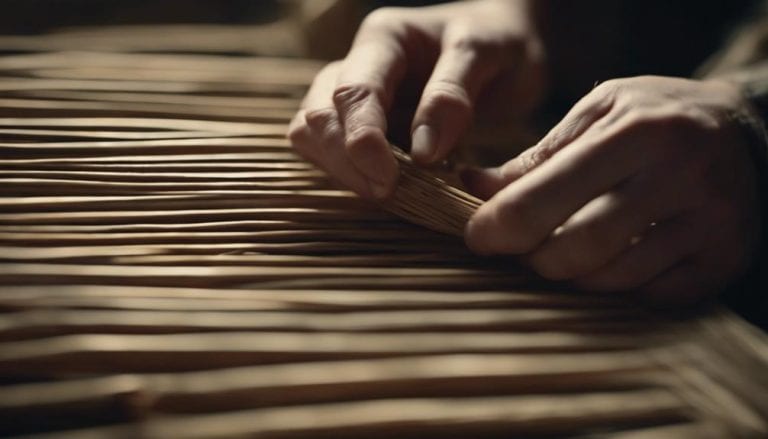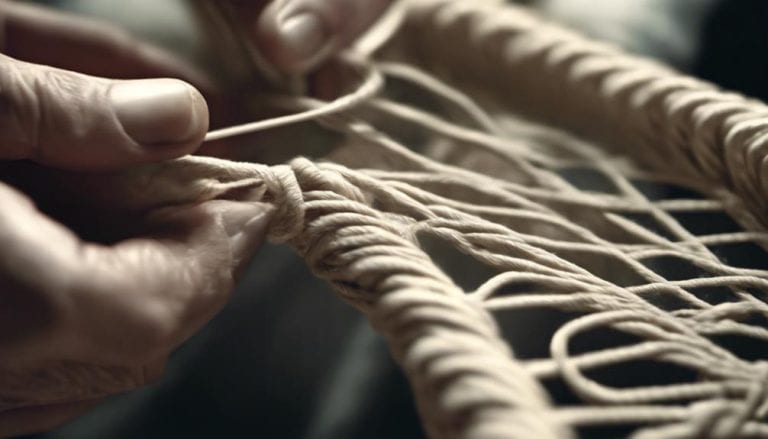Danish Cord Weaving Patterns and Techniques
When I first delved into Danish cord weaving, I was fascinated by the intricate patterns and techniques that go into creating these timeless woven seats. The precision required to master the cow-hitch knot and the innovation behind using double rails for cord direction changes are just the beginning.
Understanding how spacing and layout choices impact the final design is crucial. Each weave tells a story of craftsmanship and tradition, making Danish cord weaving a captivating art form that continues to evolve.
Key Takeaways
- Mastery of intricate patterns like Moller weave is essential for Danish cord weaving.
- Understanding materials like Danish paper cord is crucial for creating durable and beautiful designs.
- Attention to detail and weaving methods are crucial for creating intricate cord weaving designs.
- Techniques like the cow-hitch knot and double rails enhance durability and craftsmanship in cord weaving.
Traditional Danish Cord Weaving Patterns
When delving into the realm of traditional Danish cord weaving patterns, the intricate designs like the Moller weave stand out as hallmark examples of the craft's complexity and artistry.
Danish cord, known for its durability and aesthetic appeal, is meticulously woven using weaving methods that involve wrapping the rails while working directly from the spool.
To replicate these traditional patterns accurately, one must grasp the concept of warp and weft, which are fundamental in creating consistent and visually pleasing designs. Understanding the intricacies of the warp (the vertical threads) and weft (the horizontal threads) allows weavers to master patterns like the 3×3 weave, which can elevate the beauty of Danish cord woven chairs.
These patterns not only showcase the weaver's skill but also reflect the rich history and cultural significance embedded in Danish cord weaving traditions. The Moller weave, with its intricate interlacing of cords, serves as a testament to the craftsmanship and attention to detail that define traditional Danish cord weaving.
Modern Interpretations of Cord Weaving

Exploring the evolution of Danish cord weaving craftsmanship reveals a fascinating blend of traditional techniques and contemporary design elements in modern interpretations of cord weaving. Modern furniture designers have embraced the art of Danish cord weaving, incorporating it into their creations to add both beauty and functionality. By infusing weaving patterns into the construction of chairs and stools, artisans elevate the comfort and aesthetic appeal of these pieces, creating a unique fusion of craftsmanship and modern design.
To illustrate the significance of modern interpretations of cord weaving, consider the following table showcasing the impact of Danish cord weaving on contemporary furniture:
| Aspect | Description |
|---|---|
| Beauty and Functionality | Danish cord weaving enhances the visual appeal and durability of furniture. |
| Comfort | Weaving patterns increase the comfort level of chairs and stools. |
| Stylish Finish | Contemporary furniture often features Danish cord weaving for a stylish look. |
| Uniqueness | The combination of craftsmanship and modern design elements creates timeless pieces. |
Techniques for Danish Cord Weaving
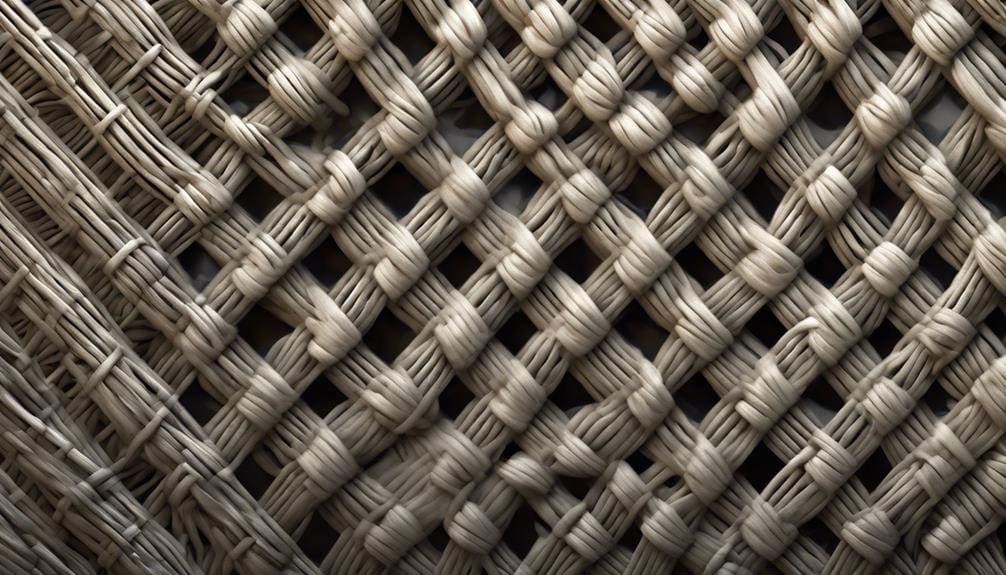
In the realm of Danish cord weaving, mastering intricate patterns like the traditional Moller weave is essential for creating authentic and durable chairs. The techniques involved in Danish cord weaving can vary, with methods including wrapping the rails while working directly from the spool.
Replicating specific weave patterns can prove challenging without physical examples for reference. To excel in this craft, understanding materials like Danish paper cord is crucial as it directly impacts the quality and longevity of the final product.
Sharing techniques and methods within the chair making community not only fosters a sense of camaraderie but also enhances skills and knowledge, pushing the boundaries of what can be achieved in Danish cord weaving.
Creating Intricate Cord Weaving Designs
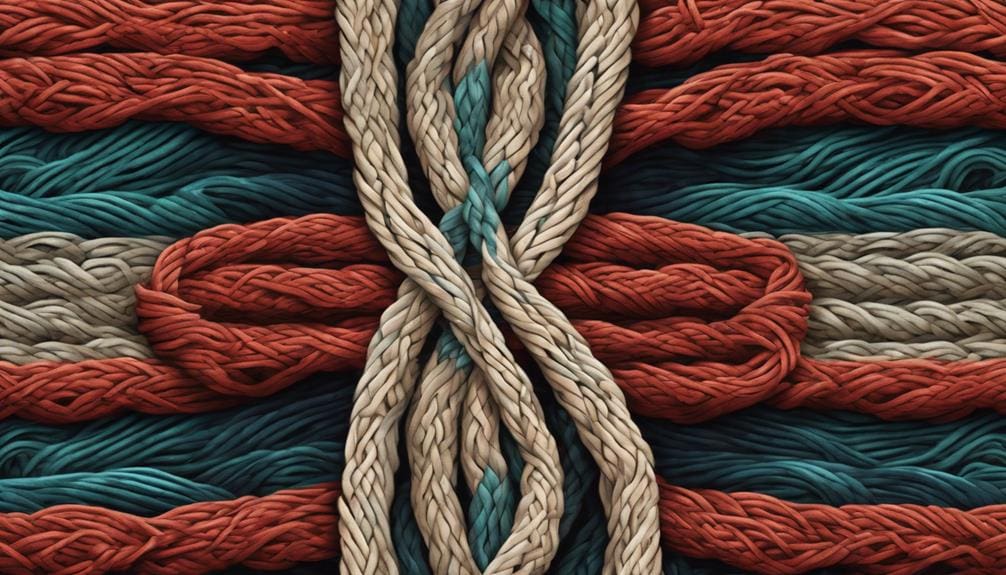
Delving into the intricate world of cord weaving designs reveals a rich tapestry of patterns and techniques that have stood the test of time in chair making craftsmanship. When it comes to creating intricate cord weaving designs for Danish cord seats, attention to detail and understanding weaving methods are paramount.
Here are three key aspects to consider:
- Variety of Weave Patterns: From traditional Moller weaves to more complex 3×3 weaves, the possibilities for cord weaving patterns are vast and varied. Each pattern adds a unique touch to the chair design, showcasing the artistry and skill of the weaver.
- Importance of Warp and Weft Relationship: Achieving consistency and visual appeal in cord weaving patterns hinges on understanding the interplay between the warp and weft threads. Proper tension and alignment are crucial for bringing intricate designs to life.
- Incorporating Double Wraps: Introducing double wraps around two rungs not only enhances the complexity of the weave but also boosts durability, ensuring the longevity of the Danish cord seat. This technique adds structural strength and visual interest to the chair design, making it a true work of art.
Enhancing Durability in Cord Weaving
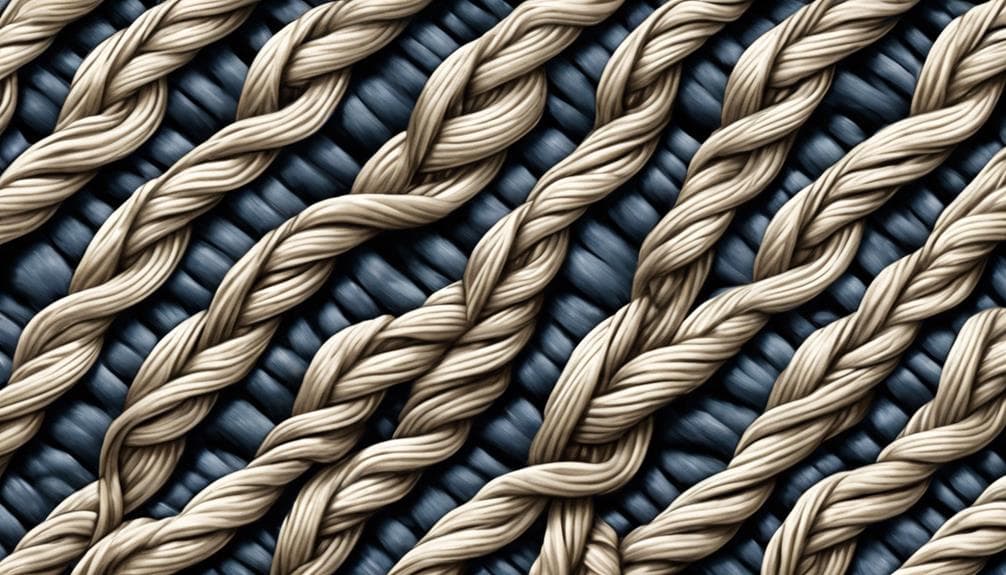
Enhancing the durability of cord weaving structures involves strategic techniques and meticulous craftsmanship to ensure lasting strength and quality in Danish cord seats.
Increasing the number of weavers in Danish cord weaving not only enhances the aesthetic appeal but also significantly improves the durability of the seat structure. By incorporating the cow-hitch knot technique, we can secure the cords tightly, resulting in gap-free seats that enhance longevity.
Double rails in weaving play a crucial role in allowing the cord to reverse direction without the need for nails, contributing to the overall durability of the seat. Modern Danish cord weaving techniques focus on creating dense and durable seats, ensuring longevity.
Experimenting with optimal spacing during weaving is paramount as it increases the durability and longevity of the cord seats, making them resilient to wear and tear over time.
These techniques, rooted in historical craftsmanship, elevate the durability of Danish cord weaving, ensuring a lasting and robust seat structure.
Danish Cord Weaving Tips and Tricks
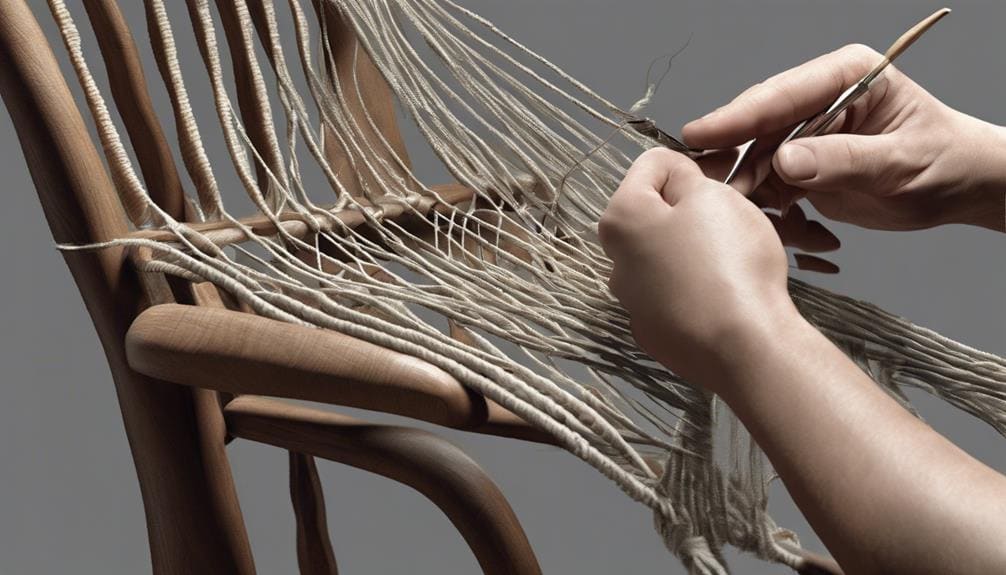
To master the art of Danish cord weaving, one must grasp essential tips and tricks that enhance craftsmanship and authenticity in creating intricate patterns and durable chair structures. When delving into the world of Danish cord weaving, consider the following key points:
- Study Traditional Weaving Patterns: Immersing yourself in traditional Danish cord weaving patterns like the Moller weave is crucial for authenticity and historical accuracy.
- Work Efficiently with Materials: Optimize your weaving methods by learning how to efficiently wrap the rails while working directly from the spool, ensuring a smooth and streamlined process.
- Knowledge Sharing in the Community: Engaging with the chair making community to share weaving techniques fosters a culture of collaboration, leading to enriched knowledge exchange and continuous skill development.
Exploring Unique Cord Weaving Styles
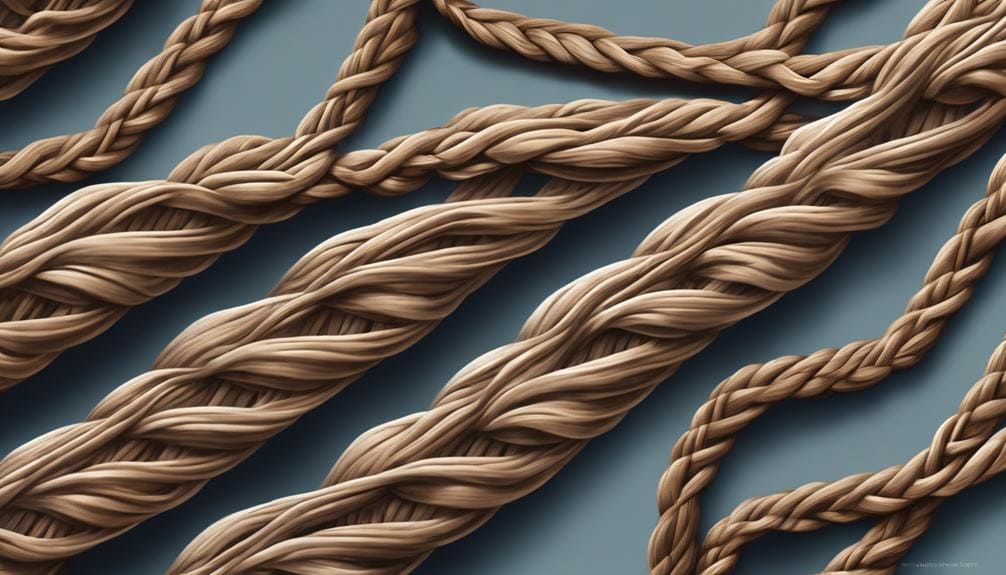
Exploring the evolution of Danish Cord weaving styles reveals a tapestry of innovation and tradition interwoven with craftsmanship and artistic expression.
In the realm of chair weaving, the Danish Cord material offers a unique opportunity to experiment with various weaving techniques to create distinctive seat designs. Weaving methods such as the Moller weave, known for its durability, can be employed to craft chairs that marry tradition with functionality.
By exploring patterns like the 3×3 weave, we can achieve not only visually appealing designs but also structurally sound seating options. Understanding the intricacies of weaving, such as the interplay between warp and weft, is crucial for mastering the art of Danish Cord weaving.
Replicating complex patterns may pose challenges without proper references, emphasizing the importance of studying physical examples or templates. Delving into the world of Danish Cord weaving styles opens doors to endless creative possibilities, allowing artisans to push the boundaries of design while honoring a rich heritage.
Frequently Asked Questions
What Are the Different Types of Danish Cord Weaving?
Color variations in Danish cord weaving include light tan, white, and black options. Design possibilities are endless with weaving tools like shuttles and needles. Maintenance tips involve regular dusting and avoiding excessive sunlight exposure. Creative applications range from seating to wall hangings.
What Is the Nail Spacing for Danish Cord Weaving?
Personally, nail spacing for Danish cord weaving is crucial. It ensures proper tension control, supports different material choices, accommodates cord thickness, complements various weaving techniques, and aids in chair restoration. Consistent spacing is key.
What's the Difference Between Laced and Unlaced Danish Cord?
When comparing laced vs. unlaced Danish cord, the distinction lies in visible knots for laced, while unlaced offers a smoother look. Material options, color choices, tension control, and decorative elements play a pivotal role in determining the overall aesthetic.
How Is Danish Cord Made?
Crafting Danish cord involves meticulous cord preparation, weaving process, and material sourcing for quality. Traditional techniques blend with modern adaptations, offering a range of color options and design possibilities. Maintenance ensures long-term durability, vital for lasting craftsmanship.
Conclusion
As I reflect on the intricate art of Danish cord weaving, I'm captivated by the blend of traditional patterns and modern interpretations that showcase the versatility of this technique.
The combination of durable weaving methods and artistic designs creates a unique and timeless appeal that truly sets Danish cord weaving apart.
By exploring different styles and techniques, we can continue to push the boundaries of this ancient craft and create stunning pieces that stand the test of time.


